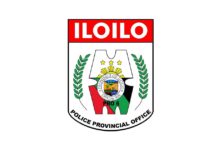ILOILO City – Some people make the Iloilo River their garbage dump.
Personnel of the Iloilo River Development Project monitoring the body of water found plastic bags, coffee cups, junk food wrappers, and even diapers among other solid wastes in the river, according to City Agriculture Office (CAO) head Romulo Pangantihon.
Some of these were entangled in the roots of mangroves, he added.
The Iloilo River, passing through 35 barangays, is a source of livelihood for fisherfolk and a habitat and nursery for many fish species, thanks mainly to the lush mangroves growing on its banks.
Pangantihon urged people to refrain from throwing garbage into the Iloilo River, actually an arm of the sea.
The city government started redeveloping the Iloilo River into a tourist attraction in 2012 with the opening of the first phase of the Iloilo Esplanade.
“Throwing garbage into the river is not good for the environment,” Pangantihon stressed.
The city government is also ensuring the growth of mangroves at the river, he added.
The Iloilo River, some 15 kilometers long, is home to an estimated 22 mangrove species.
Like coral reefs, mangrove forests are extremely productive ecosystems that provide numerous goods and services both to the marine environment and people. They are home to a large variety of fish, crab, shrimp, and mollusc species. These fisheries form an essential source of food for coastal communities.
The dense root systems of mangrove forests trap sediments flowing down rivers and off the land. This helps stabilizes the coastline and prevents erosion from waves and storms. In areas where mangroves have been cleared, coastal damage from typhoons is much more severe.
Pangantihon said his office has two teams regularly checking the river and collecting garbage – one positioned in the upper stream (Diversion Bridge) and the other in the lower stream (near a ferry terminal)./PN






Fine those people and strictly enforce the ordinance